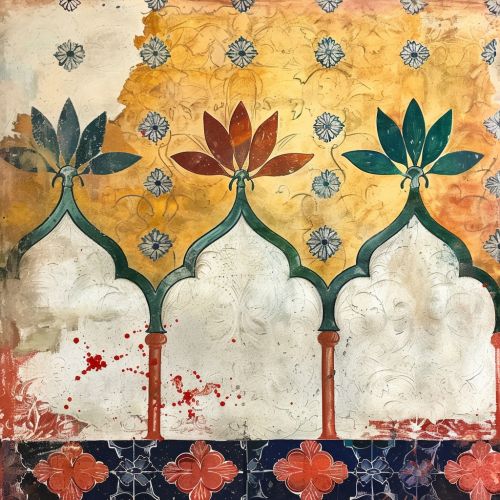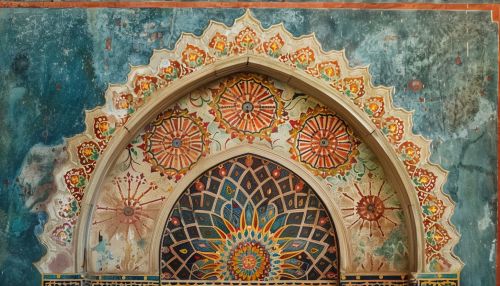Secco
Introduction
Secco, an Italian term meaning "dry," is a technique used in various forms of art and architecture. It is most commonly associated with fresco painting, where it refers to the application of pigments onto a dry plaster surface, as opposed to the buon fresco technique, where pigments are applied onto wet plaster. This article delves into the historical context, technical aspects, and applications of the secco technique, providing a comprehensive understanding of its significance in the art world.
Historical Context
The secco technique has been employed since ancient times, with evidence of its use in Egyptian tombs and Roman catacombs. During the Middle Ages and the Renaissance, secco was often used in conjunction with buon fresco to add details and enhance the vibrancy of fresco paintings. Notable examples include the works of Giotto and Michelangelo, who utilized secco to achieve specific effects that were not possible with wet plaster alone.
Technical Aspects
Materials
The primary materials used in secco painting include pigments, binders, and a dry plaster surface. Pigments are typically derived from natural sources such as minerals, plants, and insects. Common binders include egg yolk, casein, and gum arabic, which help the pigments adhere to the dry plaster.
Application Process
The secco technique involves several steps:
1. **Preparation of the Surface**: The plaster surface must be thoroughly dried before the application of pigments. This ensures that the pigments do not absorb into the plaster, which is a key characteristic of the secco technique. 2. **Mixing Pigments and Binders**: Pigments are mixed with binders to create a paint that can adhere to the dry plaster surface. The choice of binder can affect the final appearance and durability of the painting. 3. **Application of Paint**: The paint is applied using brushes or other tools, allowing for precise control over details and textures. Artists often use secco to add fine details, highlights, and corrections to buon fresco paintings.
Applications in Art and Architecture
Fresco Painting
In fresco painting, secco is often used to add details that are difficult to achieve with wet plaster. For example, artists may use secco to paint intricate patterns, facial features, and clothing details. The secco technique allows for greater flexibility and control, enabling artists to make adjustments and corrections after the initial fresco has dried.


Mural Painting
Secco is also commonly used in mural painting, where large surfaces need to be covered with intricate designs. The technique allows artists to work on large sections of a mural without the time constraints imposed by wet plaster. This makes secco particularly suitable for projects that require extensive detailing and multiple layers of paint.
Restoration and Conservation
In the field of art restoration and conservation, secco is often used to repair and restore damaged frescoes and murals. Conservators use secco to fill in missing sections, enhance faded colors, and restore the original appearance of the artwork. The technique allows for precise control and minimal intervention, preserving the integrity of the original work.
Advantages and Limitations
Advantages
1. **Flexibility**: Secco allows artists to work at their own pace, without the time constraints of wet plaster. 2. **Detailing**: The technique enables the addition of fine details and corrections, enhancing the overall quality of the artwork. 3. **Versatility**: Secco can be used on various surfaces, including walls, ceilings, and panels.
Limitations
1. **Durability**: Secco paintings are generally less durable than buon fresco paintings, as the pigments are not absorbed into the plaster. This makes them more susceptible to damage and fading over time. 2. **Adhesion**: The adhesion of pigments to the dry plaster surface can be challenging, requiring careful preparation and the use of appropriate binders.
Notable Examples
Giotto's Arena Chapel
One of the most famous examples of secco painting is Giotto's frescoes in the Arena Chapel in Padua, Italy. Giotto used secco to add details and enhance the vibrancy of his frescoes, creating a masterpiece that has stood the test of time.
Michelangelo's Sistine Chapel
Michelangelo's frescoes in the Sistine Chapel are another notable example of secco painting. While the majority of the frescoes were created using the buon fresco technique, Michelangelo used secco to add details and make corrections, resulting in one of the most iconic works of art in history.
